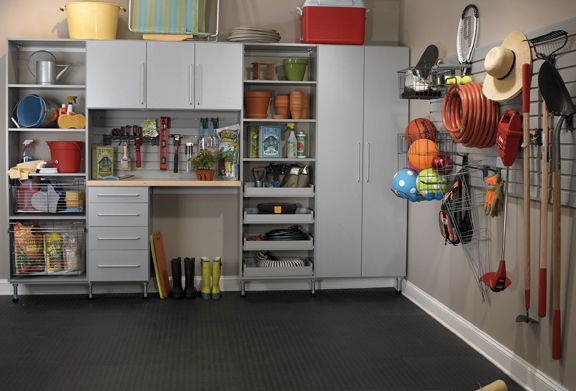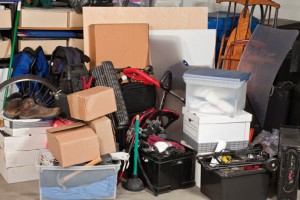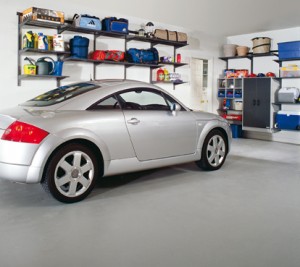Storage Central: Culling Clutter from our Darkest Places

 When the daffodils peek out, it’s time to turn grey winter thoughts toward spring. On that first warm day, don’t waste daylight hours scrambling for the bike helmets, only to discover the tires went flat over the winter. Where is that bike pump, anyway?
When the daffodils peek out, it’s time to turn grey winter thoughts toward spring. On that first warm day, don’t waste daylight hours scrambling for the bike helmets, only to discover the tires went flat over the winter. Where is that bike pump, anyway?
Oh no! It’s probably in…(queue scary music)…The Garage…or…The Basement.
The garage or the basement is usually a dedicated storage room in most homes. However, those who purchased an rv may need to look for rv storage units. A typical garage doesn’t have enough space to house a motorhome. Buying an RV isn’t an easy decision to make. It’s more than just buying an RV. It’s learning how to drive or tow it. It’s learning how to do your maintenance and when to take it to the shop. It’s learning how to overcome the sticker shock of gas prices versus mileage. Buying an RV is a long-term, adventurous investment that isn’t right for everyone. If you’re considering purchasing an RV, get first some tips at Zervs.
Organizing these storage areas doesn’t have to send a chill down your spine, but you do need an action plan. These zones can be overwhelming due to their size and confusing conglomeration of clutter. First, you need to shed some light on the situation—literally! Garages and basements are dark; throw open the windows and doors, and bring in a couple of lamps. Grab a roll of heavy-duty yard bags and take paper and pen with you so you can make note of to-do’s as you’re working (like “need new broom” or “leak in corner; call Butler Plumbing Inc. for a plumber”). Have a tape measure handy so you can jot the dimensions of objects that might best be stored in a container. Start at the entryway and work around the room in a clockwise direction.
 At first, the focus of your work should be throwing away that which is broken, rusty, or past its useful life. Honestly, if an item is living in your basement or garage, it is already on the seldom-used list. “This 8-track tape player still works!” is not a good reason to keep storing it. Breaking up with our stuff is hard to do, but now is the time for tough love. Ask yourself these questions: Have I used it in the past year? Do I have another one that is better? Would I be upset if I threw it away and then couldn’t find a replacement? Why might I need a replacement anyway, if I’m not using it now? If you want to keep your garage tidy and more organized, consider renting a self storage unit where you can keep your belongings.
At first, the focus of your work should be throwing away that which is broken, rusty, or past its useful life. Honestly, if an item is living in your basement or garage, it is already on the seldom-used list. “This 8-track tape player still works!” is not a good reason to keep storing it. Breaking up with our stuff is hard to do, but now is the time for tough love. Ask yourself these questions: Have I used it in the past year? Do I have another one that is better? Would I be upset if I threw it away and then couldn’t find a replacement? Why might I need a replacement anyway, if I’m not using it now? If you want to keep your garage tidy and more organized, consider renting a self storage unit where you can keep your belongings.
As you sift through your things, group similar items. Gardening tools stay together; snow shovels by the sleds, the rakes with the tarp. To ensure that you don’t miss anything as you sort trash from treasure, always return to your clockwise rotation and don’t forget that your first priority is culling clutter. Now, tie that bag up and take it straight to the trash! Resist the urge to peep in and pull anything out. Let it go.
OK, great job! You’ve filled up several bags of trash and it’s now time to organize what remains. In the four corners of the room, create zones based upon the seasons, using whatever you have on hand to help corral things. The “Spring Zone” might contain the fertilizer spreader and the Easter baskets; “Summer” would hold life jackets and water skis; “Winter” would be for the twinkle lights and outdoor extension cords, and so on. Oft-used items should be placed nearest the doorway, while items that are used only occasionally can be stored further back. How do grocery stores display so much merchandise? They go UP. Peg boards, hooks on walls, and steel shelving are among the most-recommended storage solutions for these hard-working areas of your home. The ultimate goal is to have the center of the room empty so you can either park a car or set up a large table as a work station. Just don’t let the work table become a fresh parking lot for bits and pieces that should be stored in their proper zones.
 Now that everything is in good working order and has a place, evaluate everything and make a clear-headed decision: might someone else have more use for this item than me? If the answer is yes, DONATE IT. Most places appreciate your thinking of the season when you bring articles for donation, so don’t take outgrown scooters and pool toys in January or sleds and snow shovels in July. With each change of season, make it a habit to pass through your newly organized garage or basement and repeat the above steps, tossing what’s broken and donating what’s outgrown. Earmark the first weeks of April, June, August, and October to coordinate your cleaning sessions with the four dates that the landfill will accept your random castoffs. It’s a drag to realize you’re stuck with the Commodore 64 hogging valuable storage space because you missed the special date at the landfill by a week. When you’re ready to let it go, you want it gone!
Now that everything is in good working order and has a place, evaluate everything and make a clear-headed decision: might someone else have more use for this item than me? If the answer is yes, DONATE IT. Most places appreciate your thinking of the season when you bring articles for donation, so don’t take outgrown scooters and pool toys in January or sleds and snow shovels in July. With each change of season, make it a habit to pass through your newly organized garage or basement and repeat the above steps, tossing what’s broken and donating what’s outgrown. Earmark the first weeks of April, June, August, and October to coordinate your cleaning sessions with the four dates that the landfill will accept your random castoffs. It’s a drag to realize you’re stuck with the Commodore 64 hogging valuable storage space because you missed the special date at the landfill by a week. When you’re ready to let it go, you want it gone!
I’m fairly certain that Albert Einstein wasn’t thinking of basements or garages when he wrote, “Out of clutter, find simplicity”—but you never know.
TRASH TIPS
If you culled a sizeable pile of trash, there’s no need to schedule a pickup from the city (unless you’re disposing of freon-containing appliances—those require scheduled pickup). Simply put your bulky items on the curb on your regular collection day. If you have latex paint to dispose of, it must be dried before you can place it with your trash. Pour kitty litter into the cans to absorb the excess liquid. You can also arrange to get a mini skip hire in Canberra in advance.Chemical-containing and electronic items can be taken to the Regional Landfill four times each year. This service is available to residents in Lynchburg and counties of Amherst, Appomattox, Campbell and Nelson and the towns of Amherst, Altavista, and Brookneal on the following second Saturdays: April 14, June 9, August 11 and October 13; 8 a.m. to noon. For more information about what’s accepted, visit www.lynchburgva.gov.






